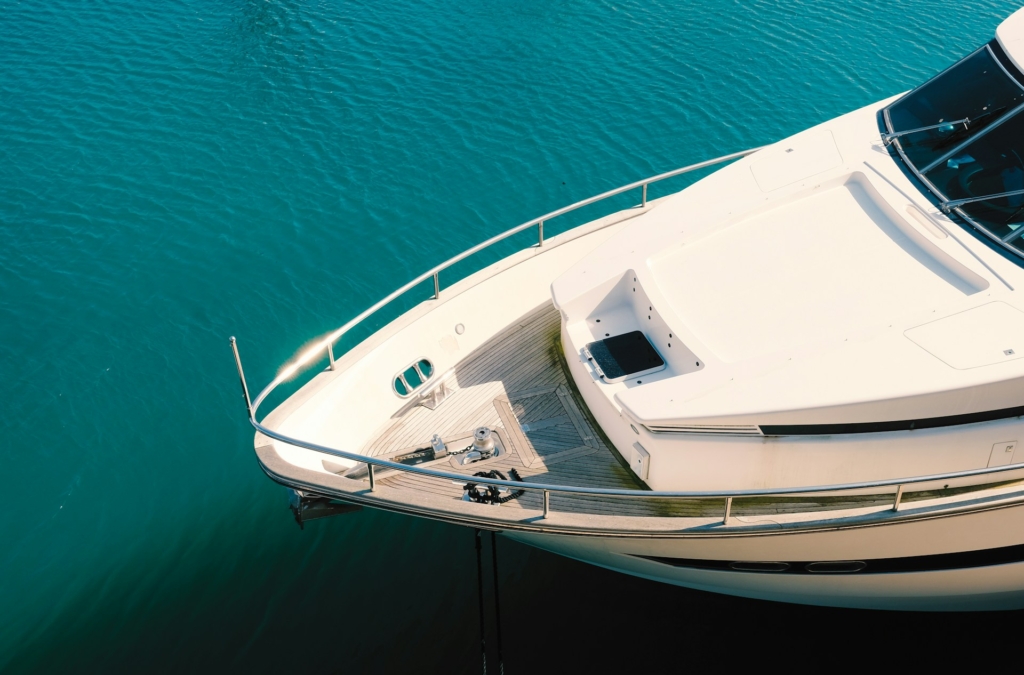
Luxury yachting is a strong symbol of status, offering access to travel experiences that are anything but ordinary.
Owning a yacht goes beyond extravagance: it’s about the freedom to explore secluded spots, each trip shaped by your personal taste.
This lifestyle stands apart from standard holidays, replacing everyday routines with the allure of open waters and the refined touch of high-end leisure.
However, yacht ownership isn’t just about lavishness. Thorough research is key—consider the range of yacht types, the responsibilities of upkeep, legal requirements, and the ongoing costs that come with such an investment.
A careful evaluation ensures that your dreams match practical realities, helping you secure a purchase that genuinely enhances your life.
Table of Contents
- 1 Understanding Yacht Categories
- 2 Defining Usage Goals and Onboard Aspirations
- 3 Key Technical and Practical Considerations
- 4 Accessibility
- 5 Draft
- 6 Range
- 7 Engines and Performance
- 8 Gross Tonnage
- 9 Amenities
- 10 Financial and Legal Essentials
- 11 Selecting Between New, Used, or Custom
- 12 Working with Yacht Brokers and Preparing for Sea Trials
- 13 Key Takeaways for Aspiring Yacht Owners
Understanding Yacht Categories
Yachts can be grouped into three main types: motor yachts, sailing yachts, and multihull yachts.
Motor yachts deliver speed and steadiness, appealing to those who savour a lively and luxurious escape. Their interiors often feature lavish spaces, ideal for owners seeking both comfort and performance.
Sailing yachts provide a calmer, more eco-conscious experience by harnessing wind power. They’re great for anyone who values a classic approach to yachting and appreciates the timeless charm of sailing.
Multihull yachts merge elements from both motor and sailing styles. Their dual-hulled design offers extra stability and manoeuvrability, along with generous deck space and swift performance, making them perfect for extended journeys and a variety of watery adventures.
Defining Usage Goals and Onboard Aspirations
Before starting your yacht search, it’s vital to clearly decide how you plan to use it. Whether you want extended trips on open waters, memorable family getaways, or lively social gatherings, pinpointing your main goal helps steer you to yachts that truly match your way of life.
Deciding on your top priorities from the start makes it easier to compare each option against your must-have features and preferences.
Extended trips often call for a craft offering great fuel economy, ample storage, and cosy sleeping quarters. With family fun in mind, you might favour a safe, practical layout with multiple cabins and child-friendly perks.
If lively gatherings are the focus, look for spacious entertainment zones, leading-edge technology, and a stylish, inviting interior. Having a clear checklist refines your search and avoids the danger of jumping at an appealing option that falls short on key features.
Key Technical and Practical Considerations
Accessibility
Accessibility on a yacht matters more than you might expect. Adding ramps, lifts, wide doorways, and roomy corridors helps people with limited mobility feel at ease and makes the boat more appealing for charters and family-friendly holidays.
Adapted bathrooms and sleeping areas let everyone move about freely, ensuring a relaxed onboard environment. By meeting a range of mobility needs, the yacht attracts a broader audience and offers greater flexibility, whether for personal use or as a charter investment.
Draft
Draft is the vertical distance between the waterline and the bottom of the hull, and it strongly affects where your yacht can safely go.
A shallower draft lets you slip into waters with limited depth, allowing trips to hidden anchorages or quiet bays that bigger vessels can only admire from a distance. This is perfect for anyone keen to explore smaller harbours or enjoy coastal cruising without being restricted to deeper ports.
Meanwhile, a deeper draft typically delivers added stability and improved handling in open water. The trade-off is that these yachts need deeper cruising areas and often call for tenders when accessing shallow marinas or popular docking spots.
Paying attention to draft, influenced by hull shape, keel style, and weight distribution, is vital for matching a yacht’s abilities with your intended travel plans.
Range
Fuel capacity sets the distance a yacht can cover, ensuring you have enough power for extended outings. Larger tanks translate into fewer refuelling stops, but efficient fuel use also depends on engine choice.
Engines that burn fuel economically, such as modern diesels, often perform well at modest speeds and help keep consumption in check. When combined with a hull design that reduces drag, the right engine keeps you moving at cruising speed without wasting fuel.
Think about how and where you plan to explore when matching a yacht’s range to your needs. For nearby shores, a smaller range may be adequate, while more far-reaching adventures call for ample fuel capacity and the right balance of engine efficiency and cruising speed.
Engines and Performance
High-quality engine brands offer exceptional power alongside durability and reduced running costs, provided upkeep is carried out routinely.
Renowned names like NTU, Deutz, and Mercury Man have earned trust for their reliable designs, easing the pressure of long-term servicing. Consistent maintenance preserves an engine’s efficiency by minimising the risk of major repairs down the line.
Performance demands also guide engine selection. A unit that combines swift acceleration with responsible fuel consumption directly influences day-to-day operating expenses and onboard comfort.
Aligning engine power with how the yacht will be used helps strike a balance between higher cruising speeds and economical fuel use. Checking engine function at various speeds refines this choice, delivering the needed performance while keeping spending in check.
Gross Tonnage
A yacht’s internal volume, measured as gross tonnage, has a direct impact on handling and day-to-day operations.
Higher tonnage can make a yacht heavier and less agile, often requiring a bigger crew to look after onboard systems and the added structural demands.
In many regions, crossing the 300-gross-tonne threshold means dealing with tougher rules and certifications, like those enforced by the U.S. Coast Guard, adding a layer of paperwork and safety checks.
Yachts at or below around 300 gross tonnes remain a favourite with first-time owners, as they deliver generous living and social spaces while preserving easier manoeuvrability.
They tend to need fewer crew members, which lowers management expenses and simplifies upkeep, making them a more budget-friendly starting point.
These vessels also fall under simpler regulatory guidelines, sparing owners the heavier costs and time demands that come with larger classifications.
Amenities
Yacht amenities go a long way in shaping your onboard experience around your own cruising preferences. If you thrive in the open air, generous outdoor areas ensure you can soak up the sun and breathe in the sea breeze.
Meanwhile, well-considered indoor spaces offer a cosy retreat, whether you’re hosting lively gatherings or stepping away from the weather for some peace and quiet.
A layout that shifts easily between different activities and group sizes is a big plus. Adaptable zones might include storage for water toys, discreetly integrated entertainment systems, or even a professional office setup.
Thanks to this flexibility, whether you’re planning family fun, social events or checking in on work, your yacht’s design can match your plans while balancing comfort and style.
Financial and Legal Essentials

Yacht expenses go beyond the initial purchase. While the direct cost can be large, owners can look at finance routes like marine loans or lease agreements that spread out payments more smoothly.
Ongoing charges, including maintenance, insurance, crew wages, and mooring costs, often sit at around 10% of the yacht’s value, so making space for these in your budget is wise.
Taxes such as VAT and duty can affect the final figure too. If VAT and duty weren’t settled at the time of sale, extra charges might apply during registration, pushing the price up quite a bit.
It’s best to check with your broker whether these fees have already been sorted, helping you avoid any nasty surprises during ownership transfer.
Legal details are just as important. Proper flag registration confirms your yacht under global maritime guidelines and decides which rules and taxes apply.
Up-to-date paperwork on ownership records, structural standards, and insurance safeguards your outlay, making the yacht easier to run and simpler to resell if that day comes.
Selecting Between New, Used, or Custom
Pre-owned yachts often present an appealing alternative if you’re keen to save money and shorten your wait for delivery. Many second-hand yachts have been looked after with care, meaning you can still enjoy top-notch features and performance at a friendlier upfront cost. Plus, the second-hand market sometimes opens up a chance to secure a bigger vessel or more advanced equipment that might be beyond your budget brand new.
If you want a yacht shaped precisely around your preferences, exploring the top-tier range from Sanlorenzo or choosing a new custom build could be the way forward. You’ll have control over virtually every element, from interior layout to the technology you install, ensuring the final product fits your needs perfectly.
This personalised route often carries a higher price tag, but the freedom to integrate cutting-edge systems and one-off design ideas can make the investment hugely satisfying.
Before you settle on any deal, think about chartering or renting a yacht similar to the one you’re considering. Being hands-on with an equivalent model gives you valuable insight into how the layout, performance, and features meet your requirements.
By sampling a few options and seeing them in action, you’ll know which elements genuinely matter and enjoy a far more confident purchase.
Working with Yacht Brokers and Preparing for Sea Trials
An experienced yacht broker can be your best ally. They handle the groundwork of detailed research and legal documentation, plus they liaise with qualified surveyors to secure a fair and transparent deal.
Their industry know-how covers market pricing, prospective maintenance concerns, and any discreet issues that could crop up later. It helps you conduct thorough checks before putting money on the line.
Brokers can also untangle legal paperwork and oversee flag registration, safeguarding your purchase while speeding up the administrative tasks of yacht ownership.
Sea trials are the next major step. Experiencing the yacht at sea lets you gauge handling, comfort, and the reliability of onboard systems in real-world scenarios.
By confirming that everything works smoothly, you can feel reassured that the yacht’s performance ticks both technical and personal boxes.
Key Takeaways for Aspiring Yacht Owners
Owning a yacht successfully depends on finding a balance between practical basics, what you truly want from your lifestyle, and keeping an eye on costs. Determining your must-have features—whether it’s the layout, the number of cabins, or any special extras—makes sure your choice matches how you plan to use the yacht and what you find exciting.
Proper maintenance planning is just as vital. Regular check-ups keep the yacht running smoothly while also helping you spot potential repairs ahead of time, protecting both your peace of mind and your wallet.
At the same time, hiring a skilled and attentive crew is essential for both smooth operations and a more enjoyable atmosphere on board. Finding people whose expertise fits your yacht’s particular demands can have a huge impact on your experience.
Having the right insurance also adds a layer of protection against accidents or unexpected costs, ensuring you can sail without constant worry.
Taking a steady, informed approach when you’re buying is key. Spending time comparing different options, doing thorough research, and trying a similar yacht through a charter can all help you fine-tune your requirements and avoid regrets later on.
This kind of clear thinking helps you make the most of your yacht while reducing risks, so your investment remains a source of enjoyment for years to come.


